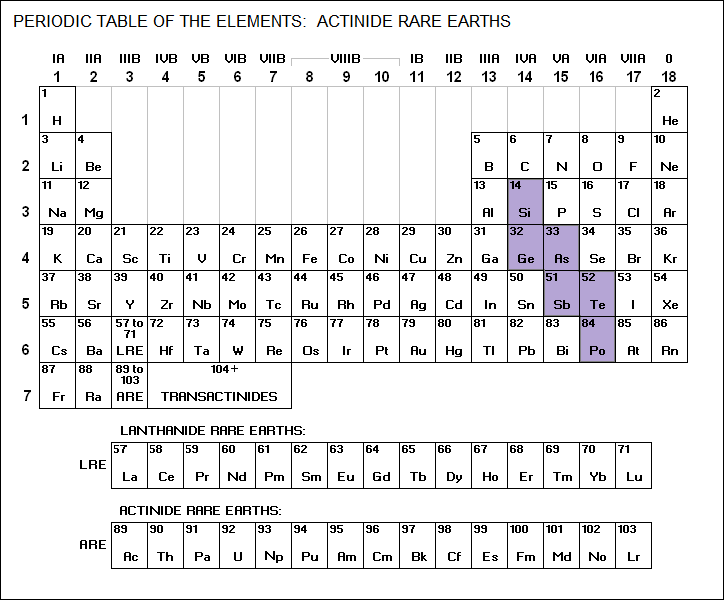
* Tellurium is a member of the semi-metals family:

____________________________________________________________________
TELLURIUM / Te / 52
Tellurium is normally obtained as a dark gray powder, though it
can be produced as a silvery, semi-metal, brittle, shiny,
silvery-white bulk material. It has fair resistance to corrosion,
with the significant condition that it burns. Eight isotopes occur
in nature:
Te<130/52> / 34%
Te<128/52> / 32%
Te<126/52> / 19%
Te<125/52> / 7%
Te<124/52> / 4.5%
Te<122/52> / 2.5%
Te<123/52> / 0.9%
Te<120/52> / 0.1%
Most are stable except for Te<130/52>, which has a half-life of
2E21 years; Te<128/52>, with a half-life of 7.7E24 years; and
Te<123/52>, with a half-life of 1.3E13 years.
atomic weight: 127.60
abundance: 72nd
density: 6.24 gm/cc
melting point: 450 C
boiling point: 990 C
valence: 2 <4> 6
____________________________________________________________________
Tellurium is produced at the level of a few hundred tonnes a year. It has a few specialized industrial uses; for example, cadmium telluride (CdTe) is used as the active component of infrared sensors, and also for solar power panels.
